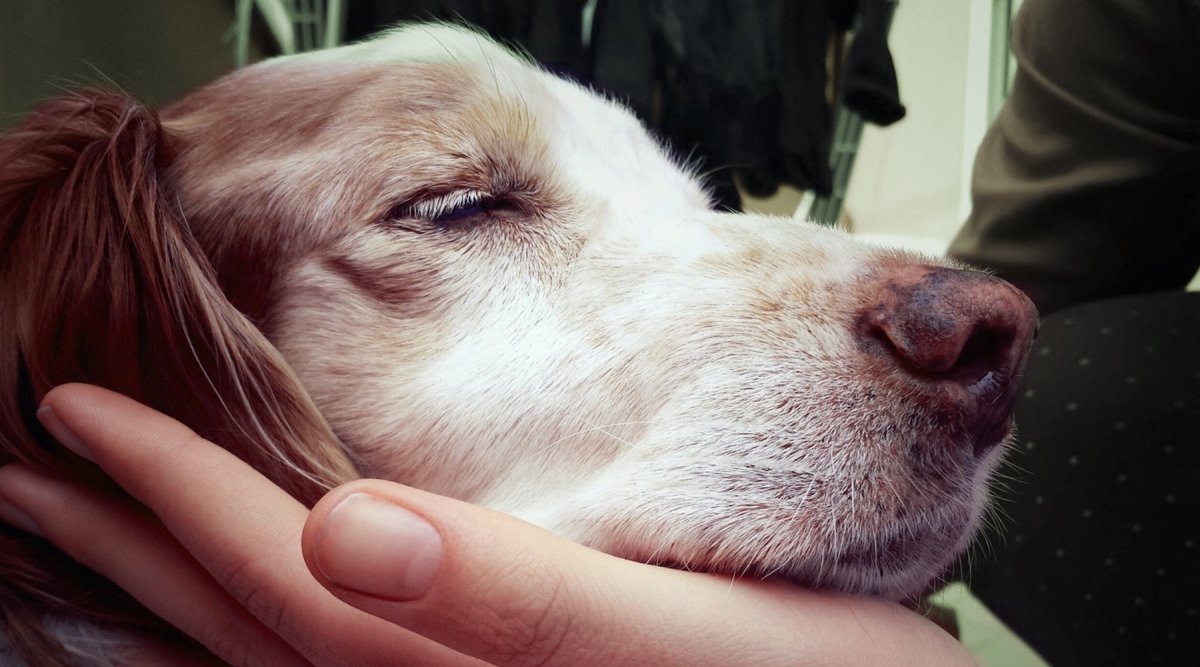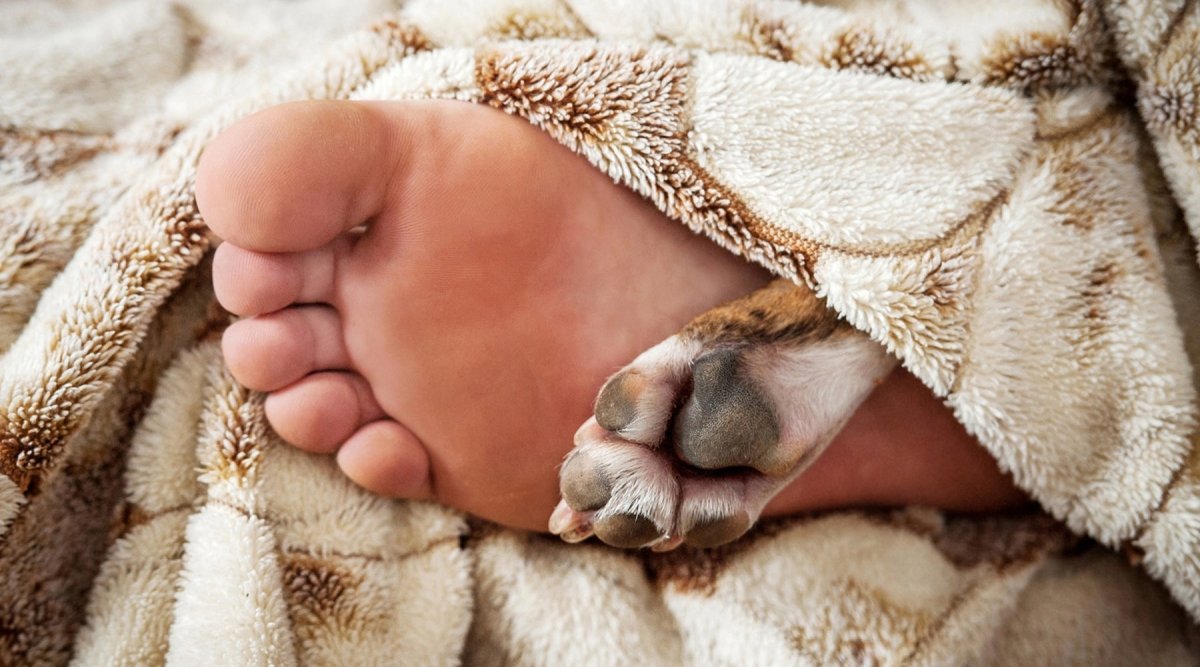It starts earlier for some dogs than others: shedding. During this time, dog hair on the sofa, in the car, on clothing and on the carpet is commonplace. Even if shedding is not exactly a dog owner's favorite time of year, it is a natural and necessary process. How long does shedding take in dogs? What helps to speed up the shedding process in dogs? And what influence does climate change have on your four-legged friend's coat? Find out all about this hairy time.
Dog shedding - in spring and fall
Changing a dog's coat is a natural process and usually takes place twice a year, in the fall and spring. The exact time depends on both daylight and temperature. The entire shedding process is normally completed after six to eight weeks.
The following applies: older dogs usually shed more and for longer than younger dogs, neutered dogs shed more than un-neutered dogs, and bitches often shed before going into heat. Dogs with a lot of undercoat also shed intensively. Some breeds, however, such as the poodle, do not undergo the classic shedding period, the hair simply continues to grow and must be clipped or trimmed regularly.
Spring is shedding time
When the days get longer and warmer again at the end of winter, your four-legged friend will slowly shed its winter coat. Compared to the summer coat, the plush winter coat has a higher proportion of thick undercoat. This soft, thin woolly coat lies under the top coat and provides your dog with excellent insulation against the cold and wet. Your dog's coat sheds more in spring than in fall, as it has to get rid of the thick undercoat.
Climate change as the cause of permanent shedding
In the past, it was possible to set the clock according to when a dog's coat change began, but this consistency has unfortunately been lost due to climate change. The periodic change of coat twice a year is hardly recognizable anymore, as many dogs now shed all year round. Temperatures above 10 degrees in the winter months and shifting seasons have also left their mark on our four-legged friends. This means an enormous effort for the metabolism and the immune system.
Another disadvantage is that many dogs are unable to shed their fur properly due to the temperature fluctuations. This is because the natural shedding process is disrupted and the organism is confused. This means that the shedding process cannot be completed. This is why there are dogs that still have their winter coat in summer.
How do you support your dog during the shedding process?
Changing your dog's coat is stressful for your four-legged friend. I recommend that you actively support your dog so that the thinner coat can grow back faster. Nutrient-rich dog food, high-quality food oils and supplements as well as regular coat care ensure that the coat grows back healthy and strong.
In view of the constantly changing climate, this is becoming increasingly important and also relieves the strain on your four-legged friend's body.
Fellharmonie feed oil - more vitality and shine after the coat change
The AniForte® Coat harmony feed oil provides the skin with essential fatty acids. The balanced mix of omega-3 and omega-6 fatty acids forms the ideal basis for supporting your pet's own skin and hair functions. The food oil is suitable for all dog and cat breeds - regardless of how long or short the coat is.
"Brush, brush, brush" is the motto when changing coat
The basic rule is: the old coat must be shed so that the new coat can grow. Regular brushing and combing removes the dead fur and the thick undercoat promotes blood circulation in the skin and stimulates the sebaceous glands, which produce protective oil.
For smooth and short-haired dogs, you should treat the coat 2-3 times a week with a soft brush made of natural bristles and a grooming glove.
If you have a long-haired or stick-haired dog, we recommend daily combing with a wide-toothed metal comb, a wire brush with curved teeth and a natural hair brush.
In addition to regular trimming, your rough-haired or wire-haired dog should be brushed 3 to 4 times with a metal comb or wire brush (terrier brush) during the shedding period.
If you notice that the hair is shedding in clumps or that hairless patches are forming during brushing, this may be a sign of a disease. To determine the cause of the shedding, make an appointment with your vet or veterinary practitioner.
To counteract the year-round shedding, you should always brush your dog as soon as the first tufts of hair appear.
High-quality nutrition for a healthy coat
Dogs can be supported very well with nutritious dog food when changing their coat. Many good supplementary foods also help to ensure that the new coat grows back healthy, strong and shiny and that the four-legged friend's body has to expend less energy.
The vital and mineral-rich Coat Harmony Vital Powder with brewer's yeast and spirulina supports the body with important vital substances during the change of coat and ensures a shiny and strong coat. The appetite-stimulating brewer's yeast can also have a supportive effect on dogs that lose their appetite during the change of coat.
Natural herbs and high-quality oils can also support the shedding process in dogs and help the new coat to grow back stronger.
Which oil is the right one?
- Fur harmony feed oil - The proven combination of salmon, hemp and evening primrose oil with plenty of omega-3 & omega-6 fatty acids for a silky, shiny coat - perfect for the change of coat!
- Salmonoil - As well as promoting a shiny coat salmon oil metabolism, prevents hair loss, lowers cholesterol levels and is valuable for a strong bone structure.
- Linseed oil - Cold-pressed Linseed oil is known for its anti-inflammatory effect and for strengthening the immune system. It also provides a healthy and natural shine to the coat.
- Hemp oil - The vegetable hemp oil contains valuable vital substances and helps with skin problems such as a dull coat, dandruff, dry skin or itching.
In addition, all these oils are characterized by a high proportion of unsaturated fatty acids and an optimal ratio of omega-3 to omega-6 fatty acids.
We have developed a vital powder for coat and skin for four-legged friends suffering from hair breakage, hair loss, dandruff, dry coat or other coat and skin imbalances. The herbs, vitamin complexes, special yeast, micronutrients and trace elements it contains compensate for nutritional deficiencies and create the conditions for a thick, shiny coat and a healthy skin structure.
My 3 tips for getting rid of annoying hair on clothing:
- Put hairy clothes that are suitable for tumble drying in the tumble dryer for 5 minutes. The movement in the drum and the air flow ensure that the hair ends up in the lint filter.
- Use anti-hair balls or lint balls for the washing machine. These pick up the animal hair.
- The classic: remove the hair with a lint roller.
A healthy diet and regular grooming can speed up the shedding process in dogs, which we as dog owners are also happy about. You also lay the foundation for a strong summer coat and can counteract the year-round shedding.





